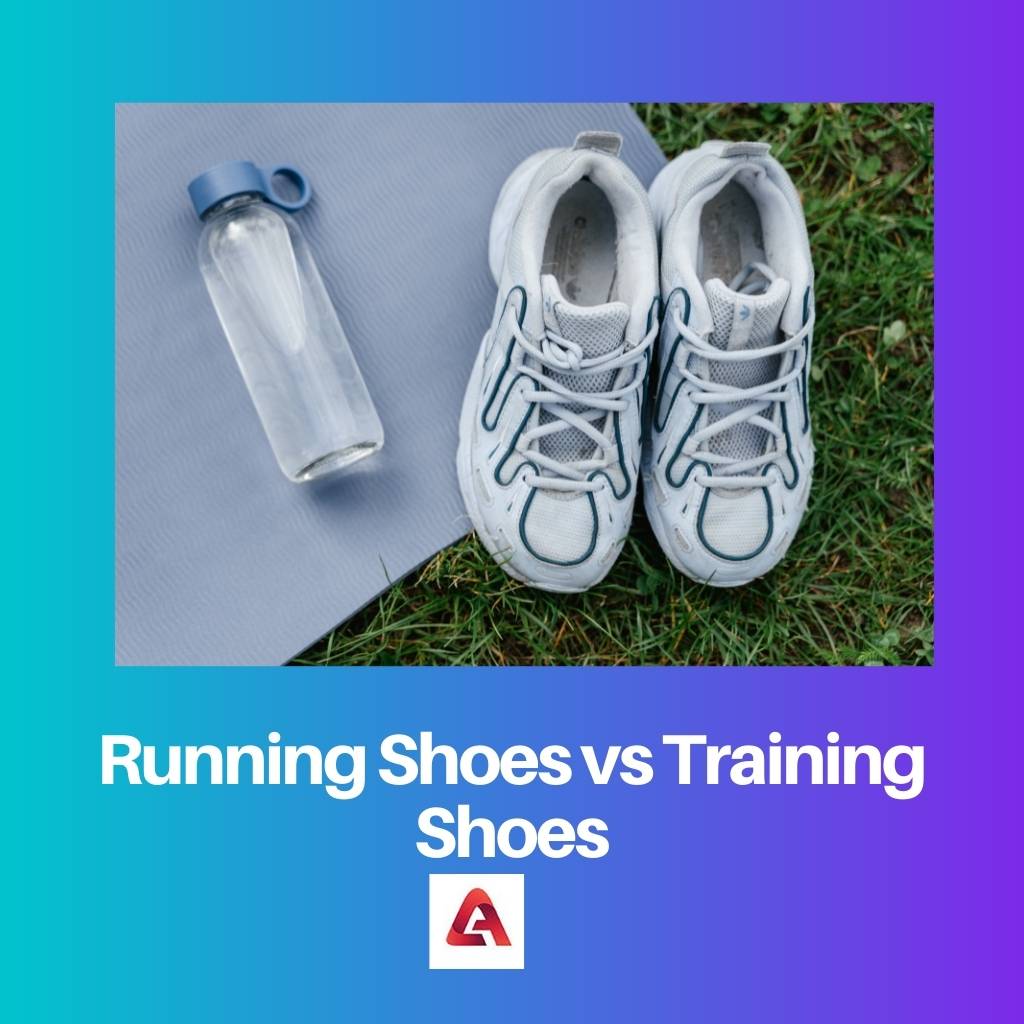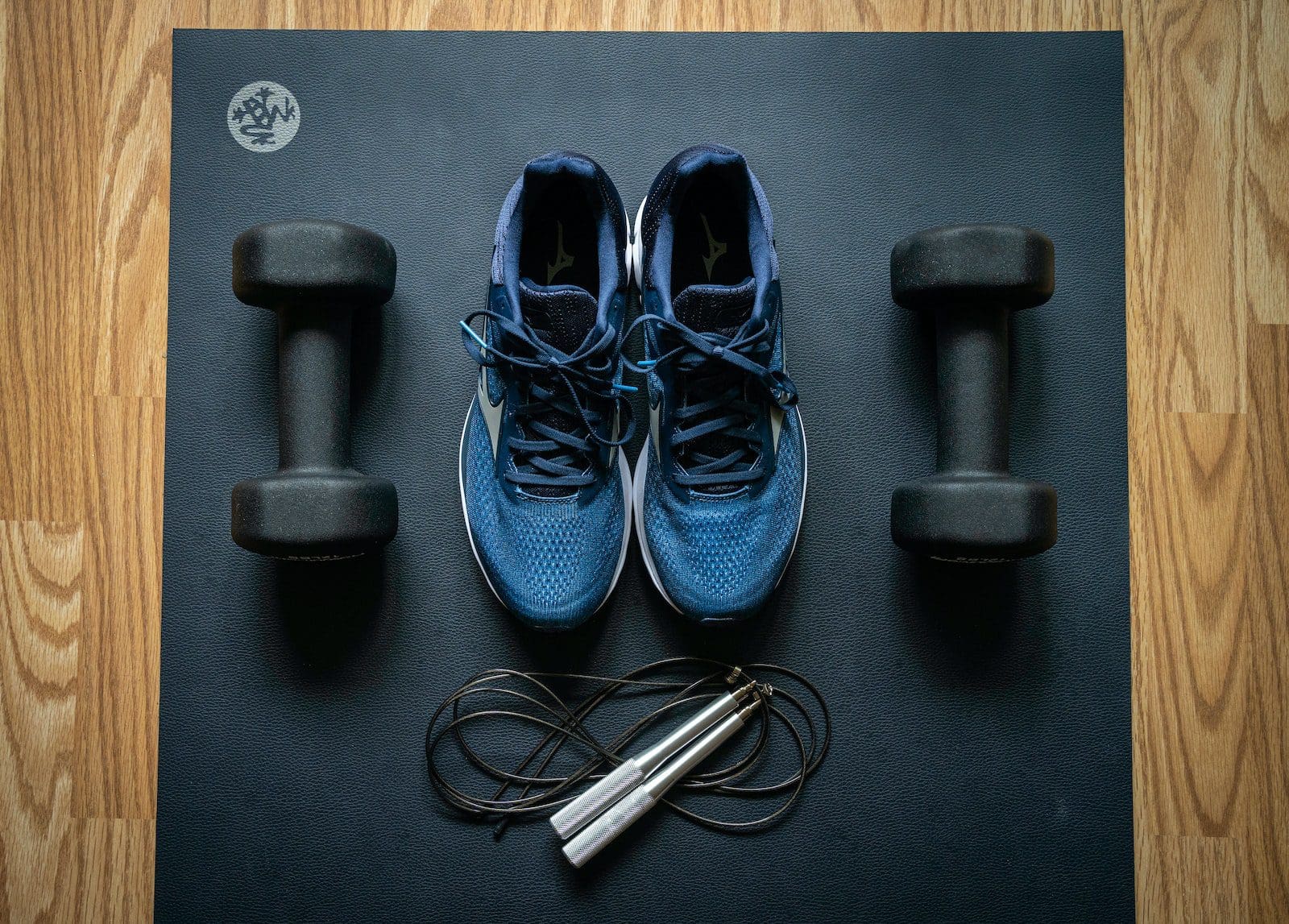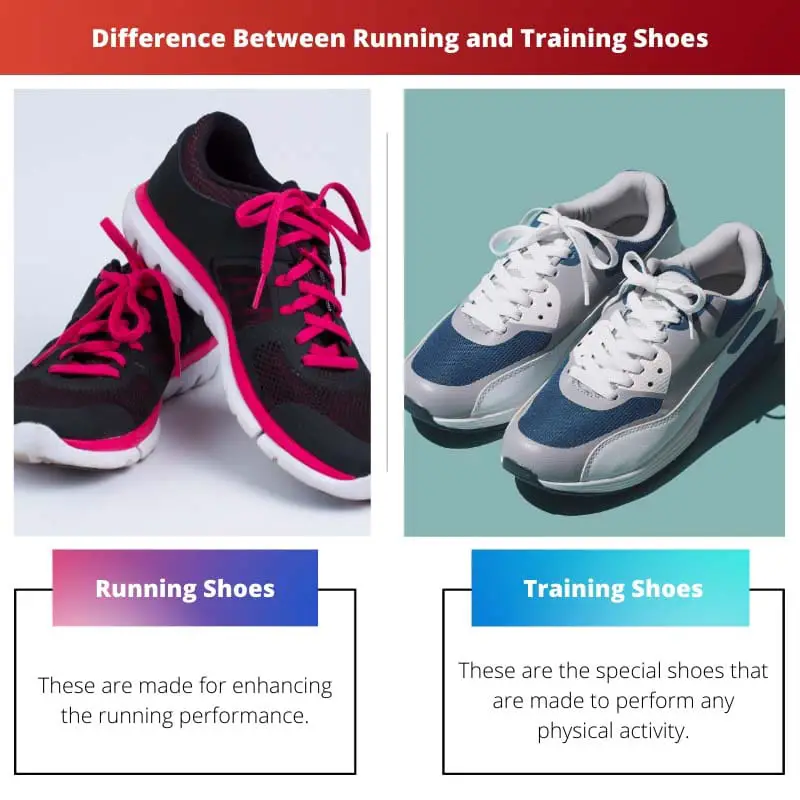The right size of the show is important to be known for the comfort of the feet. Because people are unaware of the right type and right purpose of the shoes, therefore, they have to face the discomfort in their feet while performing any activities.
Every other type of shoe is different in its sole, height, features, purpose, movement, etc.
Key Takeaways
- Running shoes provide cushioning and support for forward motion, while training shoes offer stability for multidirectional movement.
- Running shoes prioritize weight reduction and flexibility, while training shoes focus on durability and ankle support.
- Training shoes have a flatter sole for balance during various exercises while running shoes have a more pronounced heel-to-toe drop for forward propulsion.
Running Shoes vs Training Shoes
The difference between Running Shoes and Training Shoes is that the built of running shoes are made to support the heel-to-toe movement. They are made to enhance the running experience for the individual. Whereas comparatively, on the side, the build of the training shoes is for providing flexible, side-to-side movement with a wider range.

Running shoes are made to provide extreme performance while running. These types of shoes are best for running or for tracks.
The sole of the shoe is made thick with some height to provide proper comfort from the heel region to the toe. The shoes are breathable and light in weight, and for the best performance of the shoe, added support and cushioning are provided.
Training shoes are made for performing almost every possible physical activity like – running, stopping, jumping, breaking, and making change in directions.
The shoes are made up of extremely light in weight. The heel drop (or the distance from the height of the heel to the height of the toe) or soles of the training shoes are flattened.
Comparison Table
| Parameters of Comparison | Running Shoes | Training Shoes |
|---|---|---|
| What is it? | These are made for enhancing the running performance. | These are the special shoes that are made to perform any physical activity. |
| Weight | Lightweight | Extremely light |
| Heel Drop | Thick soles with height | Flat soles |
| Movement | Forward movement | Backward movement |
| Purpose | Running | Physical activities like – kickboxing, gymming, aerobics |
| Feature | Breathable and light | Heavier |
| Traction | Sturdy grip | Less traction |
| Cushioning | Thick cushion | Less cushion |
What is Running Shoes?
Running shoes are shoes manufactured specifically to provide comfort to the individual while running. They are preferably made for the same purpose and enhance the quality.
The shoes are made very light in weight to make them more comfortable. The heel drops, or the soles (distance of the height of the heel from the height of toe region), are made thick for the support, which adds up the cushioning with the sturdy and firm grip.
The shoes are made light and breathable so that to prevent sloppiness and prevents fatigue, shock, pain, pressure, or any type of injury. They mostly support the forward movement.
Because of this feature, running shoes provide minimum support to the ankle and thus make it unsuitable for any other physical activities.
Running shoes are of many types based on where the individual has to perform their running exercises.
In simpler terms, they are categorized on the basis of the location of the running practices, and they are as follows – Neutral running shoes, Stability running shoes, Minimalist running shoes, motion control running shoes, and Barefoot running shoes.

What are Training Shoes?
Training shoes are shoes that have been manufactured to provide extreme comfort and also to perform every possible physical activity.
These are made to help in moving feet in side-to-side movement, and also, they may help in moving in multi-directional.
The soles of the shoes are made flatter to provide extreme comfort and support to the feet. As well as they are best suited for – gymming, yoga, and sports.
As these are made to perform all the possible physical activities thus, they are used in different sports and for different purposes like –
- Weight Lifting – Weight lifting requires a stable ankle and mobility and guarantees whole-body stiffness because while lifting the heavyweights, it gets easier for the person to lift even the heavy loads.
- Walking – Training shoes can be opted for by the person that is determined to have evening or morning walks on a regular basis, as they are strictly suitable for walking and not for jogging or running.
- Indoor Workouts – Proper workouts require a proper and right choice of shoes. The wrong choice may cause injury or excess pressure on the feet of the individual. Thus, indoor workout practices like – skipping, jumping jacks, etc., can be performed wearing training shoes.

Main Differences Between Running and Training Shoes
- Running shoes were eventually made to enhance and increase the running performance of the individual, whereas comparatively, on the other hand, the training shoes were made to perform almost all types of physical activity.
- The weight of the running shoes is quite light whereas comparatively, on the other hand, the training shoes are extremely light in weight.
- The heel drops or the soles of the running shoes are made up of a certain height difference, whereas comparatively, on the other hand, the heel drop or the sole of the training shoe.
- Running shoes are made up for forward movements, whereas comparatively, on the other hand, training shoes are made up for backward movements.
- The purpose behind manufacturing running shoes is itself hidden in its meaning, that is, for running, whereas comparatively, on the other side, the purpose behind manufacturing training shoes is to perform all the physical activities like – tacking, jumping, stopping, etc.
- Running shoes are made up with sturdy grip or, say, with less traction, whereas comparatively, on the other side, training shoes are made up with firm grip and more traction so that they are able to perfect choice for physical activities.
- Running shoes comes with quite thick cushioning in order to save individual feet from injuries or pressure, while comparatively, on the other side, training shoes have less cushioning in the shoes.

- https://www.sciencedirect.com/science/article/abs/pii/S0966636208003883
- https://journals.sagepub.com/doi/abs/10.1177/036354658501300406
- https://journals.sagepub.com/doi/abs/10.1177/0363546510369548
- https://link.springer.com/article/10.2165/00007256-198502050-00003

The comparison table is very informative and helps to clarify the specific features and purposes of running shoes and training shoes. Understanding these details is crucial for selecting the right type of shoe for different physical activities.
The comparison table provides a comprehensive overview of the distinctive features and purposes of running shoes and training shoes. This detailed information is essential for individuals to make informed decisions and prioritize the comfort and safety of their feet during various activities.
The breakdown of features in the comparison table highlights the specific considerations consumers should evaluate when selecting running shoes or training shoes. This insightful analysis is essential for informed decision-making.
Absolutely. Understanding the nuanced differences in heel drop, weight, and cushioning between running shoes and training shoes is crucial for ensuring the right footwear choice for optimal performance and support.
The detailed descriptions of running shoes and training shoes are invaluable for individuals seeking the right footwear. This information empowers consumers to make well-informed decisions that prioritize comfort, performance, and safety during physical activities.
Absolutely. Understanding the specific differences in construction, traction, and purpose between running shoes and training shoes is essential for consumers to select the most suitable footwear for their needs.
The detailed description of the features and functionality of running shoes and training shoes provides valuable insights. It’s essential for individuals to consider these factors when making decisions about their footwear to prevent discomfort and potential injury.
Absolutely. This information will guide consumers to make well-informed choices and prioritize comfort and safety in their physical activities.
The emphasis on the differences in movement, heel drop, and cushioning between running shoes and training shoes is enlightening. It underscores the importance of tailored footwear for specific activities.
The detailed explanations of the construction and purpose of running shoes and training shoes are enlightening. It’s crucial for individuals to be well-informed about these aspects to ensure the right footwear selection for their activities.
Absolutely. This breakdown helps consumers understand the specific functions and designs of running shoes and training shoes, ultimately leading to better choices and enhanced comfort during physical activities.
The detailed comparison between running shoes and training shoes sheds light on key differences that are instrumental in guiding consumers to make informed footwear choices. This analysis enhances the understanding of what to look for in shoes for different physical activities.
Agreed. The breakdown of features, including weight, heel drop, and traction, is crucial for consumers to select footwear that aligns with the demands of their specific physical activities.
The detailed examination of running shoes and training shoes provides valuable insights for individuals looking to invest in appropriate footwear for their physical activities. This information enhances the understanding of the specific characteristics and functionalities of each type of shoe.
The clear distinction between running shoes and training shoes is valuable for consumers seeking the right footwear. The unique features of each type of shoe highlight their intended purposes and benefits.
The emphasis on the differences in traction, cushioning, and movement support in running shoes and training shoes underscores the importance of informed decision-making when it comes to footwear.
Agreed. Understanding the distinct characteristics of running shoes and training shoes is essential to optimize performance and minimize the risk of foot discomfort or injury.
This is a great breakdown of the intricacies between running shoes and training shoes. It’s important to understand the purpose and design behind each type of shoe to ensure proper performance and comfort. Well done!
I totally agree. Knowing the differences will help people make better choices when it comes to their footwear for different activities.
The comparison of running shoes and training shoes is comprehensive and insightful. This knowledge equips consumers with the understanding needed to distinguish between these distinct types of footwear and make informed decisions.
I completely agree. This analysis enhances the understanding of the unique features and requirements of running shoes and training shoes, enabling individuals to select the most suitable footwear for their activities.